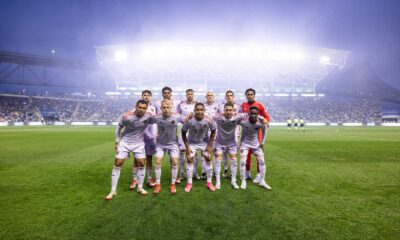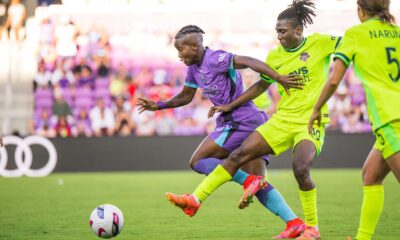Orlando Pride
How the 2024 Orlando Pride Stack Up against the Best Clubs in World Soccer
The Pride are off to a tremendous start to their NWSL season, but how do they compare to many of the other top clubs across the world?
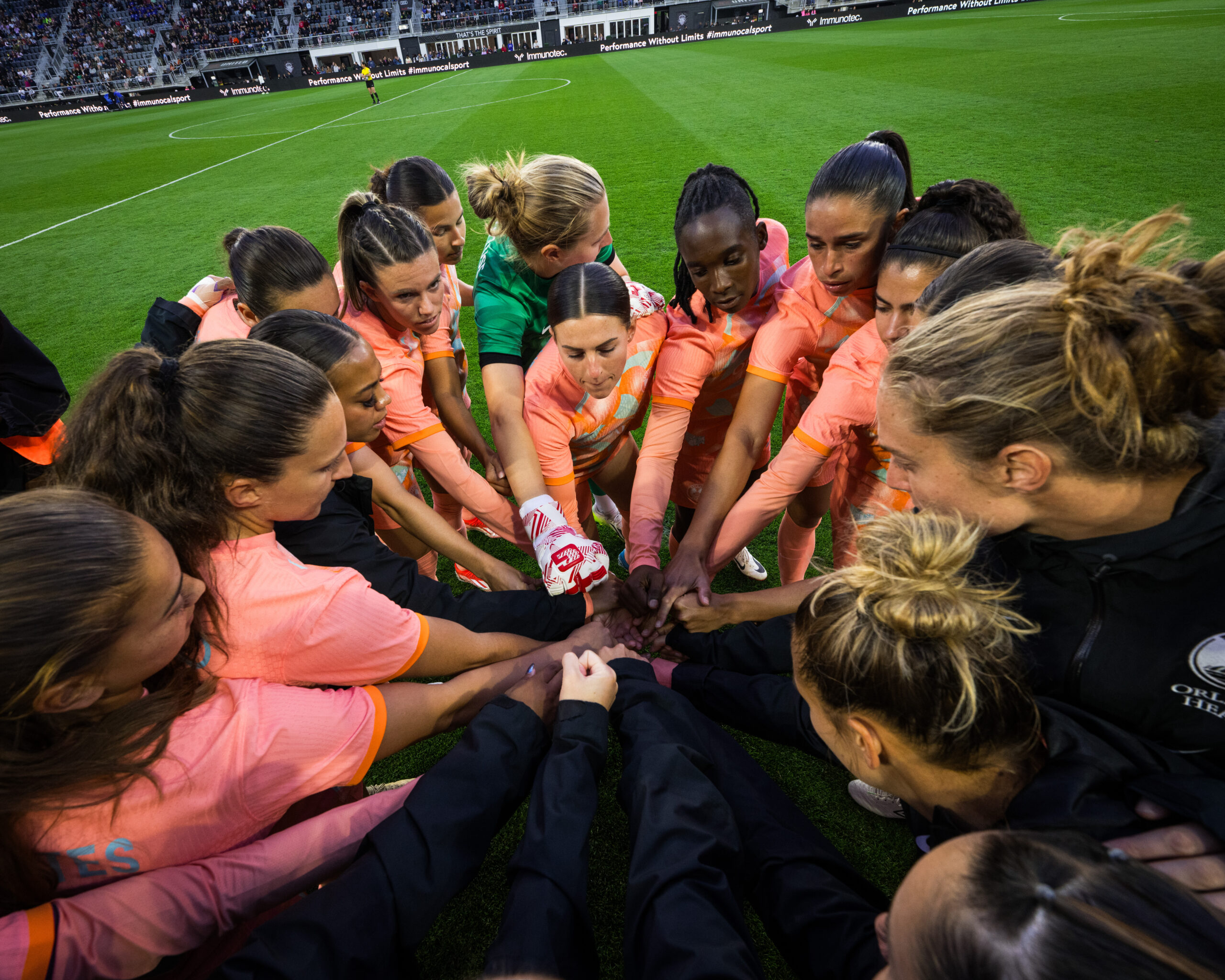
As someone who majored in mathematics in college, I love when I find an answer to a problem and it is undoubtedly and unassailably correct. I like the analysis and the problem-solving parts too, but for me the best part of any math problem is when I find the answer and I know that there is no more work to do for that problem. In mathematics there is a defined answer, and the only question is why did Dr. (Redacted) at the Harvard of the South Rollins College always take points off for not showing my work even though I had the correct answer all most of the time? I fear I may have gone off track.
Where I want to go this week is an evaluation of the Pride and whether the 2024 version is one of the best clubs in the world — a question that, unlike those math problems I like so much, does not have a simple, defined answer. I mean, in the end the answer will be either yes or no, which is about as simple as it gets, but the dreaded phrase “it is a matter of perspective” looms large over any question about “who is the best?”
Mathematicians like questions that end in “st,” like ones about answering who/what achieved the most, highest, farthest (though not furthest, thank you Finding Forrester), fastest, or was the least, lowest, nearest, or slowest, but even though best qualifies as ending in those two letters, there is no simple mathematical way to show best in most cases. State fairs and the Winchester Dog Show’s judges may disagree with their Best in Show awards, but when it comes to the “best” teams in women’s soccer, we can try to quantify, but we also have to qualify, because women’s soccer does not yet have a true global competition pitting leading clubs against one another.
In the last two years we have had an incredible Olympic tournament and World Cup in the women’s game, both viewed by millions across the world, and both of those tournaments will play a large role in my evaluation of how to determine which club teams are the best right now in 2024. While we have a limited sample of club vs. club games that we can use to compare teams from different leagues all over the world, what we can do is look at the players who are on high-performing teams and look at collections of talent to compare those against one another.
I looked at the rosters of all the club teams across every women’s league tracked on fbref.com, which includes the following (apologies for the long list, but it is important to see for perspective): Australia, Austria, Belgium, Brazil, Denmark, England, France, Germany, Italy, Japan, Netherlands, Norway, Spain, Sweden, Switzerland, and the United States. There are of course many other women’s leagues across the world, including some with outstanding teams, but I am relying on the available data to evaluate teams, and Opta, the company that tracks all the data and provides it to fbref.com, has not yet decided to track women’s leagues in China, Mexico, Portugal, Scotland, and many others.
Across all of those tracked leagues are nearly 200 women’s teams, and that includes the leagues that have produced most of the winners of the continental competitions in Europe and South America for as long as they have existed (Europe since 2001 and South America since 2009). Asia and North America are both rolling out continental women’s “Champions Leagues” for the first time in 2024 and 2025, and Africa has had a women’s Champions League since 2021, but aside from the leagues in Japan and the United States, none of the leagues in Africa, Asia, or North America are tracked in as easily accessible places. I hope this changes soon, and once more data is available, I will certainly use it when I compare players, leagues, and teams.
That said, I do have a working database of nearly 200 women’s club teams for this season (2023-2024 for the leagues where their season has finished and 2024 year to date for the clubs that are currently in season). I also have a thorough database of all the players who played in the 2024 Olympics and in the 2023 World Cup, since tracking is much better at the national team level. Looking at the 190+ teams, here are the total players in each league who competed in either, or in some cases both, tournaments (Notes: a player like Grace Chanda, who has not yet dressed for the Pride, does not count toward the NWSL’s totals; Medal winners means the teams that finished first, second, or third):
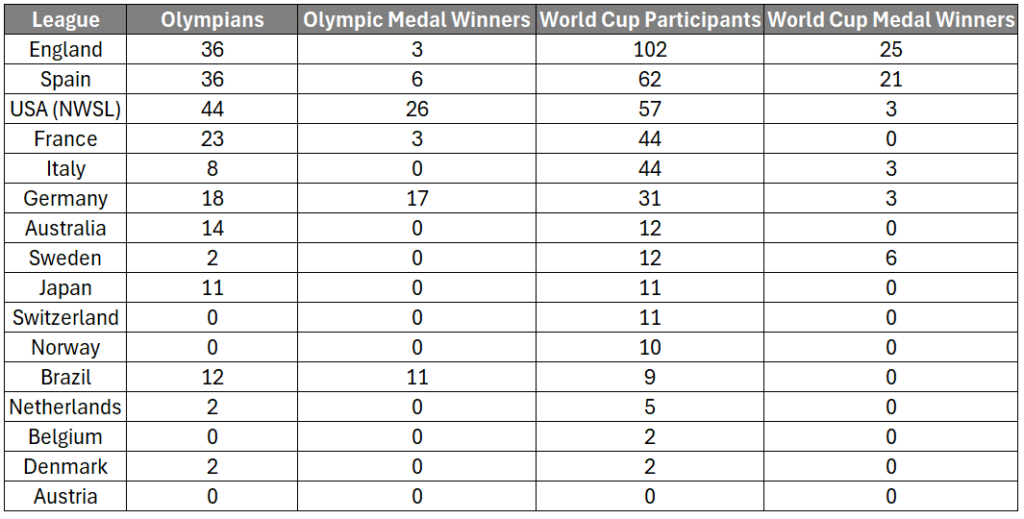
Looking at this list, which was sorted by the count of participants who competed in the 2023 World Cup, there is a clear top three among the leagues when looking at which leagues produced the most participants in the last two major international tournaments. Some of this data may include a little double counting, as players may have played for multiple teams during the season, so they show up in the same league multiple times, but I do not believe there would be any major shifts were I to get the fine-tooth comb out. And I have shaved my head since 2006, so in all honesty I would have to get my son’s comb and that one is designed for boys, so it would be so fine toothed it might not even allow any data to stay. I think we just move on.
England’s WSL, Spain’s Liga F, and the NWSL in the U.S. all are top three in Olympians and World Cup participants, and while that does not mean that they have all of the best (and again, how is best defined?) players in the world, it does mean that they have the most (ah, a beautiful word with a clear definition) players who were selected to compete on behalf of their nations in the two most recent major tournaments.
Injuries do play a role here, as Mallory Swanson, for example, would have played in the 2023 World Cup except for an injury, and she is but one of likely double digits’ worth of players who play on a club today but did not make their national team due to injury. Some national teams are extremely deep as well, so a player like Alex Morgan did not make the U.S. team for the Olympics but she almost certainly would have made the roster for several, if not many, of the other nations that qualified.
That said, the numbers are the numbers, and looking at them you can see that the three deepest leagues seem to be the ones at the top of that chart. This will be critical when we try to compare team performance across leagues, because being at or near the top in a league full of elite players is much different than being at or near the top in a league where only a few teams have all of the elite players.
Now, let’s take a look at that same chart, but looking at club teams instead of leagues (Note: there are five other clubs that also had six World Cup participants, but none had as many Olympians as did the Pride so I did not include all of them on the chart):
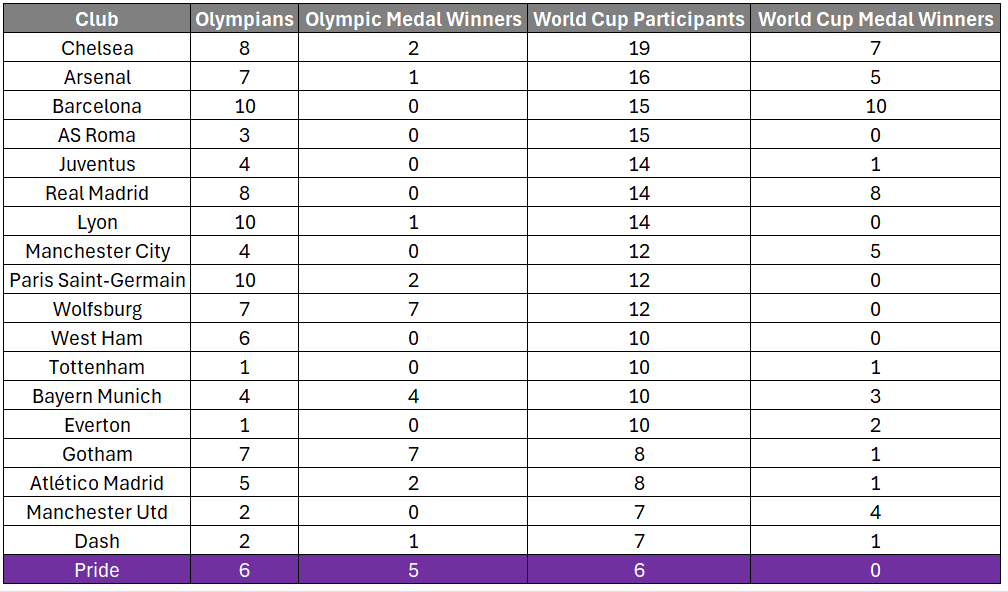
The Pride are tied for 19th for World Cup participants, which is pret-ty, pret-ty good. And if you look at the total medal wins for the Olympics plus the World Cup, the Pride have five (you are welcome for me doing the tough addition of five plus zero for you), which ranks them tied for seventh. I mentioned earlier that I was not able to pull in every league and club into my dataset, but I did look at every Olympic and World Cup medal-winning player, and there are no clubs from other leagues that would rank higher than the Pride for medal winners, though there are some clubs like Benfica of Portugal and Mamelodi Sundowns of South Africa that had more than the Pride’s six World Cup participants.
So the Pride are looking pretty good for participants in recent major tournaments, but tournaments have qualification rounds and sometimes good teams have a bad spell and miss a tournament. A better indication might be looking at FIFA’s list of the top-ranked national teams, since that is determined by all games played by a national team and not just in the two most recent major tournaments. Zambia, for example, played in both the World Cup and the Olympics but is currently ranked 64th in the world, so having a player on Zambia, as the Pride do, may actually not be as impressive as having a player on Iceland, which is ranked 14th in the world but did not qualify for the World Cup or the Olympics.
Looking at clubs in this manner changes the analysis quite a bit, and the Pride fall from being a team in the top 20ish to a team in the top 40ish if I change the evaluation to be clubs with players on national teams ranked in the top 25 of FIFA’s rankings. The Pride have five players who have played on top 25 national teams this season — Adriana, Angelina, Marta, and Rafaelle from Brazil and Emily Sams from the U.S. — but there are 15 clubs that have twice that number or more, and the list is topped by Chelsea (22), Arsenal (20), and Barcelona (18). Going back from club to full league and ranking the leagues by count of players on top 25 national teams, the list still is led by England, but now the gap is even larger, and Germany has surpassed Spain into the top three. There really is a clear number one and then four sitting tightly bunched behind, and then another gap after that:
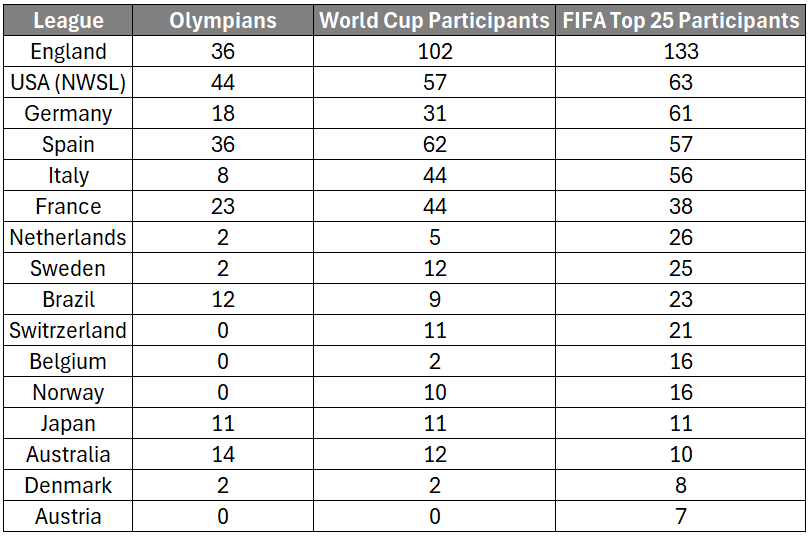
Looking at the data this way again shows the depth of the league in England, with well more than 100 players who play on top 25 national teams and who also ply their trade in England’s Women’s Super League, and that is across a league of only 12 teams. By contrast the NWSL had less than half as many players who play on top 25 national teams and our league has 14 teams.
As I mentioned previously the Pride have five players on top 25 national teams, which ranks them tied for fifth in the NWSL, behind San Diego (10), Gotham (9), Portland (8), and Washington (6) and tied with Kansas City, Chicago, and Houston. In fact every NWSL team except for Louisville has a player on a top 25 national team, and 10 of the 14 teams have at least three. Only the leagues in England and the U.S. have 10 or more teams with at least three top 25 national team players, which leads me to my next chart.
The Pride have earned 79% of the possible points they could earn this season (38 points out of a possible 48), but the team only has five top 25 national team players out of the NWSL’s total of 63, for a total of 8%. That 79% number seems like pretty high percentage of total points earned, but it actually ranks 20th among the 189 teams among all the 2024 leagues I have been writing about thus far, as you can see below:
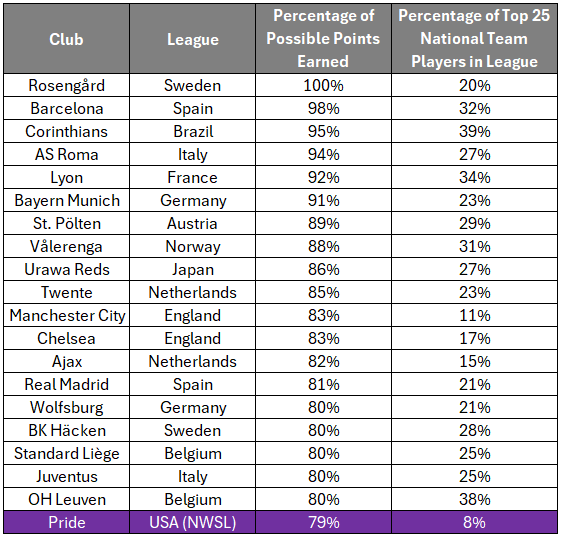
There were two other takeaways from this chart:
- A total of 12 of the 16 leagues have at least one team that earned a higher percentage of points than the Pride, who are leading the NWSL thus far this season and are well ahead of the pace of last year’s champions, the Wave, who finished the season earning 56% of their possible points.
- The Pride are leading the NWSL but with a much lower percentage of top national team players on their roster, meaning that: a) the top teams in other leagues are disproportionately heavy with elite national team players (all leagues have at least 10 teams, so if players were evenly dispersed, the expected percentages would be closer to 10% or lower), and b) the makeup of the Pride is markedly different than most of the other highly performing teams.
Markedly different does not mean worse, it just means in a different manner. The Pride have an elite level talent in Barbra Banda, who plays for her national team but that national team is not an elite team, even though she is an elite talent. And speaking of elite talent, since 2021 ESPN has used a panel of experts to rank the top 50 players in women’s soccer, and during the three seasons (2021, 2022, and 2023) when the outlet has put out these rankings, the Pride are one of fewer than 30 clubs in the world that currently have at least one player who was ranked in the top 50 during at least one of the last three years, and as you surely guessed, that is Marta, who was in the top 50 in 2021, though not on the 2022 or 2023 versions of the list.
When ESPN comes out with its 2024 list, I expect that Barbra Banda will be ranked high on it, meaning that in most games the Pride are rolling out one player who is currently considered one of the world’s best (Banda), one who was in a recent year and who is still playing at a high level (Marta), four others who are on elite-level national teams (Adriana, Angelina, Rafaelle, and Sams), one who was recently called into the camp of an elite national team (Anna Moorhouse), one who can successfully dribble through a hospital full of people chasing her while also interrupting an MRI, a surgery, and physical therapy without hurting anyone (Kerry Abello — I believe she is the only player in the world who has done this), one who made the roster for the U-20 USWNT World Cup squad (Ally Lemos), and then a full rest of the roster that has contributed to an undefeated start and taking 79% of the possible points from a league that is deep with talent from top to bottom. This is a strong team.
There is one site I found that does have a ranking of women’s teams across the world, and you can find its 2023 club ranking here. The site does not disclose its algorithm, but it did rank the 2023 Pride tied for 132nd in the world, and that was a team that did not win a game in the NWSL Challenge Cup and did not make the 2023 playoffs either.
The 2024 Pride are objectively much better than the 2023 Pride, and in looking at their record (top of the league) and goal differential (+20 overall, +1.25 per game played) in a league that is clearly one of the three, and debatably one of the two, best leagues in the world, as well as the pedigree of the players the Pride have on their team, I think that I can answer the question in the title of this story with a yes. The 2024 Pride are one of the best clubs in the world, and I think they are likely in the top 10-15%.
How close are they to the top of the list, though? That is for another article…at the end of the season.
Orlando Pride
Orlando Pride vs. Racing Louisville: Final Score 2-0 as Pride Still Can’t Win in Kentucky
The Pride lacked quality but not effort in a frustrating 2-0 road loss at Louisville.
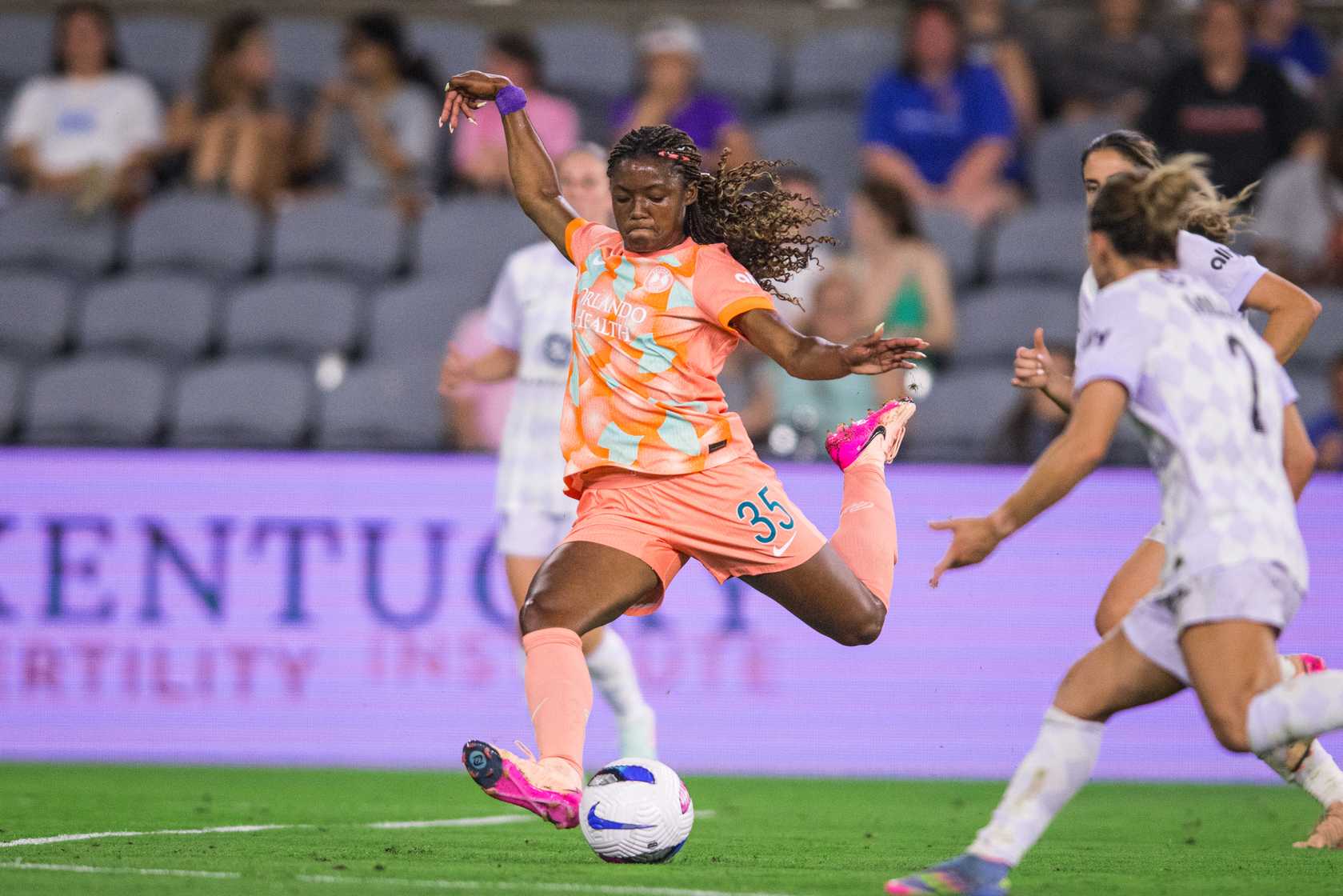
The Orlando Pride were looking to end the first half of the season on a high note, but ended up doing just the opposite in a forgettable performance at Lynn Family Stadium in Louisville. Orlando (8-4-1, 25 points) continued to waste scoring opportunities, but instead of playing the stalwart defense of the last couple of games, the Pride also failed to mark at the back post on a set piece and conceded an unnecessary penalty to gift the hosts a two-goal advantage in a 2-0 loss to Racing Louisville (6-5-2, 20 points).
Center back Arin Wright scored her first goal of the season and Taylor Flint added a penalty kick goal for Racing. The Pride dropped to 0-4-1 at Louisville since the series began and fell eight points adrift of first-place Kansas City, although the focus for now should perhaps be on finding their offense rather than catching the Current.
“Obviously disappointed with the result,” Orlando Pride Head Coach Seb Hines said after the match. “It’s come down to two set pieces.”
Hines’ starting lineup included goalkeeper Anna Moorhouse behind a back line of Cori Dyke, Kylie Nadaner, Emily Sams, and Ohihane. Haley McCutcheon and Angelina were the central midfielders with Summer Yates and Ally Watt outside and Marta and Barbra Banda up top.
Louisville came out pressing high and pinning Orlando back in its own end. The Pride eventually settled into the game, worked hard and seized the advantage in terms of possession and chances. However, they were wasteful with their few clear-cut opportunities, and rather than build an early lead, Orlando ended up gifting Racing an early advantage and had to play catch-up — something the Pride simply couldn’t do on this night.
Marta was called for an early foul that she knew little about, jumping up between two defenders. Ary Borges backed into her space, and there was contact, with Marta getting saddled with the foul. Sarah Weber got her head to the cross on the free kick, sending it just inches over the crossbar and onto the roof of the net in the fourth minute.
Orlando’s first shot came in the seventh minute after the Pride broke Racing’s pressure. The ball found Banda, who cut inside from left to right and fired from the top of the box. The Zambian international left her shot too close to goalkeeper Jordyn Bloomer, who got down and made the save.
The Pride suffered a blow moments later as Oihane went down without contact trying to keep a ball in play at the sideline. She was clearly in a lot of pain and had to be subbed off. While waiting for the sub, the game played on with Orlando using just 10 players.
Racing kept the pressure on and that resulted in shots from distance as the Pride left too much space just outside the area. Taylor Flint had a go from 30 yards out but sent her rising effort over the bar in the 11th minute. A minute later, Savannah DeMelo sent a shot from the top of the area over the goal.
Hines was finally able to send Kerry Abello on in the 13th minute, slotting her in on the left and moving Dyke to right back.
McCutcheon’s foul near the left corner of the box just past the quarter-hour mark gave Louisville a dangerous set piece shortly after the substitutions. DeMelo fired the free kick on target, and Moorhouse caught it and then got bundled over by Ary Borges who was pressed from behind by Sams.
Orlando started to settle into the game a bit after that, but did not execute well in the attack. Banda allowed Ellie Jean to knock the ball away from her in the box in the 17th minute. Moments later, Marta’s set piece delivery into the box from near the right corner of the penalty area was too low and easily cleared.
The Pride started winning corners but took all of them short, possibly to avoid Racing’s height, but they created nothing with the opportunities except a few long-range shots. On the first, Yates was knocked down in the box in the 23rd minute after getting to the end line, but the referee ruled it was a fair challenge.
Orlando should have scored in the 28th minute. Watt put in a fantastic cross to a wide-open Yates at the back post. With plenty of open net to shoot at, Yates pushed her free header wide of the left post, wasting a sitter.
“I mean, goals change games,” Hines said. “We had a chance just before their set piece (goal) where the ball gets to Ally (Watt), she takes on Courtney Petersen, puts in a really good cross. And (Yates) gets her head on it, but it wasn’t on target. And I think if that had gone in, it might have changed the trajectory of the game. You know, you’re then asking Louisville to be even more aggressive. There’s more space for us to manipulate.”
A minute later, the game turned in Louisville’s favor. Banda was too indecisive after receiving the ball in the attacking third. Leaving the ball at her feet and trying to head fake, Racing easily dispossessed the forward and broke in transition, winning a corner at the other end. Louisville paid off the set piece when Orlando left two players completely unmarked at the back post. Unlike Yates earlier, Wright got her head on the ball and didn’t miss the net, putting the hosts up 1-0 in the 30th minute. Former Pride fullback Courtney Petersen got the assist for her delivery.
Angelina fired from outside the box on a couple of short corners but the first, which may have been a back-post pass to Nadaner, went wide and out of play in the 34th minute.
Orlando again should have scored in the 35th minute. Watt did well to steal the ball in the attacking third and immediately played it to Banda. The goalkeeper was caught out, but Banda was deliberate in lining up her shot. Once she did, she missed the net entirely.
Watt had a chance to cross into the box in the 38th minute but sent her service right at Bloomer. Angelina fired a good effort from distance in the 40th minute. The dipping shot was on target but Bloomer was able to knock it out for a corner. Orlando played it short again and Angelina fired from distance only to see it deflect out off a defender. The Brazilian then ended up with yet another shot from range on the next corner, but sent it right at Bloomer.
Banda had a chance to play Marta in alone in the first minute of stoppage time, but she didn’t get enough on the pass. Flint was able to close down and knock it out for another corner. Nothing came of that one either, and moments later the half was over with the Pride staring up at a 1-0 deficit in a game they probably should have led.
The Pride finished the first half with the advantage in possession (57%-43%), shots (9-7), shots on target (4-2), corners (6-1), and passing accuracy (82%-79%). But the wasted opportunities and moment of inattentive set piece defending had the hosts out front at the break.
Hines made his second change at the half, sending Carson Pickett on for Yates. After the match, Hines said Yates hadn’t been feeling well and needed to come off, so she became the second unexpected substitution of the match.
“It kind of disrupted the momentum that we had in the first half going into the second half,” Hines said of sacrificing Oihane and Yates. “But we have good players who can adapt, and so I thought we still put them under pressure going to the second half, playing through the press.”
Louisville started the second half much like the first — as the aggressor. Emma Sears blasted wide just after the restart. On the ensuing goal kick, Orlando quickly turned it over and Borges ended up in alone on goal with the ball. With just Moorhouse to beat, the Brazilian smashed the ball off the right post, wasting an opportunity to make it 2-0 in the 49th minute.
Orlando’s first attack of the second half came in the 50th minute and it quickly broke down. Banda tried to find Pickett as she approached the box, but she made a mess of the pass and the defense cleared. The ball went to Marta at the top of the area, and the Pride captain saw her shot blocked. The rebound found Banda, who send a soft shot straight at Bloomer.
“I just think at this moment in time, everyone’s kind of adapted to us,” Hines said. “We’re getting into really good, promising positions, and we just need to execute in that last final part.”
Wright did well to keep a cross from reaching McCutcheon at the back post in the 53rd minute. Both players needed treatment after a clash of heads and were off the pitch for a few minutes.
Sears nearly made it 2-0 in the 61st minute, losing Dyke in the corner, cutting inside and must missing the far post by about a yard.
Louisville put the game away a few minutes later. On a routine throw-in, Sams was positioned well behind Weber just inside the box near the right sideline. Rather than hold her position, she tried to muscle her way around the Louisville forward, pulling her down. The referee pointed to the spot immediately.
Former Pride midfielder Flint took the spot kick. Moorhouse guessed correctly, but Flint placed the shot well to make it 2-0 in the 68th minute.
Shortly after the second goal, Hines pulled Marta, McCutcheon, and Dyke, subbing on Morgan Gautrat, Ally Lemos, and Simone Jackson, who made her NWSL debut. Those three were not likely to provide the missing piece of the attack, and they didn’t, as Orlando continued to struggle in the offensive third.
Banda put a shot on frame from a tight angle on the right in the 78th minute, but it was a comfortable save for Bloomer. The ball fell in the box near the end line where Wright was prone. Banda ran in to try to win it, but Wright wisely knocked it out off the Zambian for a goal kick.
Weber nearly made it 3-0 on another Louisville corner kick opportunity in the 80th minute. This one was slightly more contested than Wright’s and Weber put her shot wide.
Down the stretch, Orlando wasted a couple more short corners and simply couldn’t find any lethality. Banda missed the net four times in the game’s final minutes on what was an apparently frustrating night for the Golden Boot contender.
Orlando’s statistical advantage was not reflective of the final score. The Pride finished with the edge in possession (64%-36%), shots (16-14), shots on target (7-3), corners (11-3), and passing accuracy (82%-74%).
“I learned that nothing’s given, no matter what rank you are as a team,” Jackson said after making her pro debut. “So, it’s like everyone is coming after you. You have a target on your back when you wear this badge. So, I think it was wake-up call for a lot of us, and I think that I’m excited for the second half of this season.”
The Pride have a long break to stew in this performance, as the NWSL schedule won’t resume for several weeks. Orlando’s next NWSL is Aug. 3, when the Utah Royals visit Inter&Co Stadium.
Orlando Pride
Orlando Pride vs. Racing Louisville FC: Preview, How to Watch, TV Info, Live Stream, Lineups, Match Thread, and More
The Pride head to Louisville to wrap up the first half of the NWSL season ahead of the summer break.
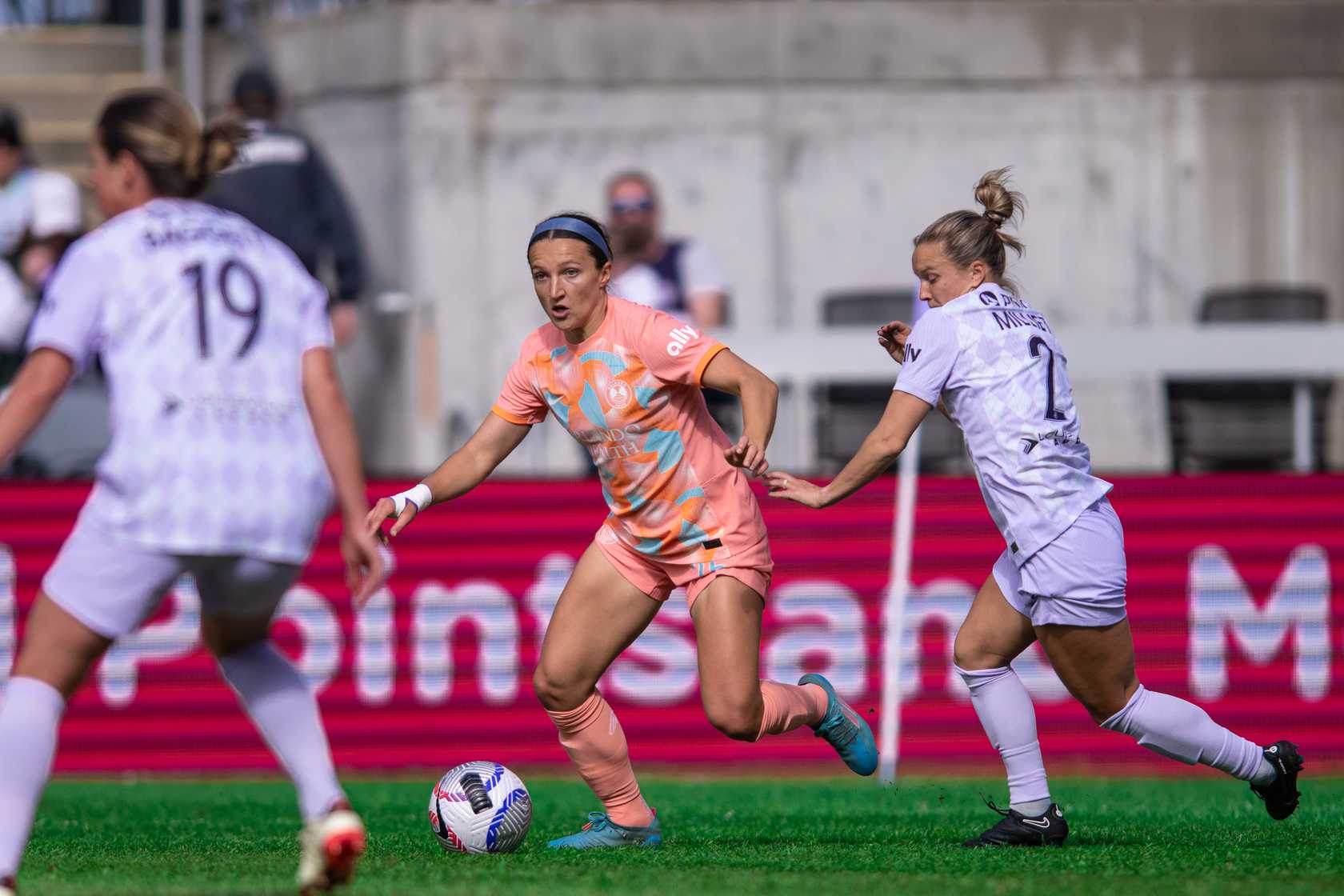
Welcome to your match preview as the Orlando Pride (8-3-1, 25 points) end the first half of the 2025 NWSL season against Racing Louisville (5-5-2, 17 points) in Kentucky. This is the first of two meetings with the second scheduled for Aug. 9 in Orlando.
Here’s everything you need to know about tonight’s game.
History
This is the fifth season of existence for Racing Louisville. The two teams have played 11 times so far, with the Pride going 3-3-5 (3-3-3 in NWSL games, 0-0-1 in the NWSL Challenge Cup, and 0-0-1 in the NWSL x Liga MX Fememil Summer Cup). The Pride are 0-3-1 against Louisville on the road in league play.
The most recent meeting between the two teams occurred in the Summer Cup last year on Aug. 1, 2024. Evelina Duljan scored her lone Pride goal in the 38th minute to give the Pride the lead. However, Reilyn Turner equalized in the 67th minute, sending the game into penalties. The Pride took the early shootout lead when Jaelin Howell missed, but saves by Jordyn Bloomer on Morgan Gautrat and Ally Watt saw Louisville take the extra point.
On May 5, 2024, in Orlando, an Emily Sams cross in the 17th minute found the head of Barbra Banda at the back post for the game’s only goal in a 1-0 Pride win. The first game of the 2024 season was on March 16 in Louisville, the season opener for both teams. It looked like it would be a long day as Elexa Bahr and Uchenna Kanu gave the hosts a 2-0 lead inside 20 minutes. The Pride got on the board in the 24th minute with an own goal by Elli Pikkujämsä, but the task was made more difficult when Kylie Strom received her second yellow card in the second half. However, Amanda Allen and Summer Yates combined on a late goal by Yates, as the Pride pulled out an unlikely 2-2 draw.
The first game of 2023 occurred on May 6 at Exploria Stadium. Messiah Bright gave the Pride an early lead and the hosts held on for 69 minutes for the 1-0 win. It was the first home win of 2023 for the Pride and their second win of the season. The second meeting was on Oct. 6, 2023 in Louisville. The Pride got off to a great start with goals by Marta from the spot early and an excellent individual effort by Kerry Abello to make it 2-0. However, Bright took Savannah DeMelo down in the box just before halftime and Nadia Nadim converted the penalty. A five-minute swing started in the 70th minute with goals by Kristen Davis and an own goal by Pride goalkeeper Anna Moorhouse, resulting in the Pride losing the critical game 3-2.
The first meeting between the two teams in 2022 took place Sept. 16 in Louisville. Racing struck first when Nadim was left open in front of goal for a tap-in. The hosts doubled their lead on a great strike by DeMelo from outside of the box, and the Pride fell 2-0.
The first meeting of 2022 was in a unique setting, taking place at Daytona International Speedway on July 3. The game was a part of the 2022 Daytona SoccerFest and was the first time a professional soccer game was played at a racetrack. Emina Ekic gave Louisville a halftime lead and DeMelo doubled the lead shortly after the break. However, the Pride fought back with goals by Strom and Darian Jenkins, pulling out a 2-2 draw. The game launched a seven-game unbeaten run that pulled the Pride back into the playoff race.
The first year the two teams met was in 2021 during the NWSL Challenge Cup in Louisville. CeCe Kizer gave the hosts the lead early, but Taylor Kornieck equalized just before halftime. It looked like the Pride would win when Abi Kim scored late, but Brooke Hendrix equalized in second-half injury time and the teams drew 2-2.
The teams played three times in the 2021 regular season, with the first meeting coming on July 9 in Orlando. Ebony Salmon gave Louisville the lead, but Sydney Leroux scored to force a 1-1 draw with a goal in second-half injury time. The second meeting was on Sept. 11 in Orlando. The Pride took a 2-0 lead into the break with goals by Leroux and Marta. Kizer got one back, but Alex Morgan’s conversion sealed three points for the Pride.
The final meeting of 2021 was in the penultimate game of the year for both teams. The Pride needed a win to keep their playoff hopes alive and they got off to a good start when Jodie Taylor scored in the third minute. However, the game slipped away as Salmon and Katie McClure scored on either side of halftime and Yuki Nagasato made the final 3-1.
Overview
A month ago, the Pride’s season was in question. Despite a strong start, they were winless in three straight games and four out of five, falling down the NWSL standings. But they’ve responded well to that adversity, winning three straight.
It started on May 23 when Banda netted the first hat trick in Pride history in a 3-1 win over the Utah Royals. They returned home on June 7 to defeat the Houston Dash 1-0 and took advantage of a quick free kick against Bay FC for a second consecutive 1-0 win.
Banda’s goal in San Jose was her eighth of the season, placing her in a tie for second with Kansas City’s Temwa Chawinga. The African pair are only one goal behind NJ/NY Gotham FC’s Esther Gonzlalez for the league lead in goals.
While Banda is one of the league’s top scorers, it’s the defense that has the team near the top of the NWSL standings. The win in California was the Pride’s fifth clean sheet this season. They’ve now won three games this year 1-0 and have still only conceded multiple goals in one game, a 3-2 win over Angel City FC on April 25.
The Pride now sit in second place, just five points behind the Kansas City Current and two points ahead of the San Diego Wave. More importantly, they’ve created momentum heading into the summer break for the 2025 Euros. They’ll desperately want all three points tonight, which would see them enter the break on a four-game winning streak. To do that, they’ll need to win somewhere they’ve never won.
Standing in their way is Racing Louisville, the seventh-place team in the league. Tonight’s opponent has been strong offensively, scoring 17 goals. But Racing’s 22 goals conceded are fourth most. Its -5 goal differential is also fourth worst in the league.
Louisville is led offensively by Emma Sears, who has six goals. Taylor Flint, Kayla Fischer, and DeMelo are tied for second on the team with two goals this season. Janine Sonis leads the team with three assists, followed by Arin Wright, Fischer, and DeMelo, each with two assists.
Louisville went into its last game with a pair of 3-2 wins over Angel City away and the Utah Royals at home. However, the Kentucky-based club went to Kansas City on June 14 to face the league leaders, falling 4-2.
“Physical game,” Pride Head Coach Seb Hines said ahead of tonight’s match. “I think what (Louisville Head Coach) Bev (Yanez) has done in the last five or six games is implemented a different style of play. A very aggressive, high-pressing team now and they’ve had a lot of success with it. They’ll be wanting to bounce back from their last result against Kansas and try to finish this period on a high leading up into the summer break.”
The Pride are still without Simone Charley (ankle), Luana (illness), Amanda Allen (shoulder), and Rafaelle (thigh). Julie Doyle (ankle) has been added to the availability report this week, listed as questionable.
Louisville is without Bethany Balcer (excused absence), Fischer (suspended), Katie Lund (hip), Maddie Pokorny (hip), Olivia Sekany (knee), and Kirsten Wright (knee).
Official Lineups
Orlando Pride (4-4-2)
Goalkeeper: Anna Moorhouse.
Defenders: Cori Dyke, Kylie Nadaner, Emily Sams, Oihane.
Midfielders: Summer Yates, Angelina, Haley McCutcheon, Ally Watt.
Forwards: Barbra Banda, Marta.
Bench: McKinley Crone, Carson Pickett, Kerry Abello, Zara Chavoshi, Viviana Villacorta, Morgan Gautrat, Ally Lemos, Simone Jackson, Prisca Chilufya.
Racing Louisville (4-3-3)
Goalkeeper: Jordyn Bloomer.
Defenders: Courtney Petersen, Arin Wright, Ellie Jean, Lauren Milliet.
Midfielders: Ary Borges, Taylor Flint, Savannah DeMelo.
Forwards: Emma Sears, Sarah Weber, Janine Sonis.
Bench: Cristina Roque, Elli Pikkujamsa, Ella Hase, Angela Baron, Marisa DiGrande, Jordan Baggett, Avery Kalitta, Katie O’Kane, Uchenna Kanu.
Referees
REF: John Matto.
AR1: Stephen Milhoan.
AR2: Brian Marshall.
4TH: Race Williams.
VAR: Anya Voigt.
AVAR: Melissa Beck.
How to Watch
Match Time: 8 p.m.
Venue: Lynn Family Stadium — Louisville, KY.
TV: None
Streaming: FanDuel Sports Network app, NWSL+.
Social Media: For live updates and rapid reaction, follow @themaneland.bsky.social on Bluesky and the Orlando Pride’s official Twitter (@ORLPride) or Bluesky (@orlpride.com) feed.
Enjoy the game. Go Pride!
Orlando Pride
Orlando Pride vs. Racing Louisville: Three Keys to Victory
What do the Pride need to do to secure a victory against Racing Louisville on the road?
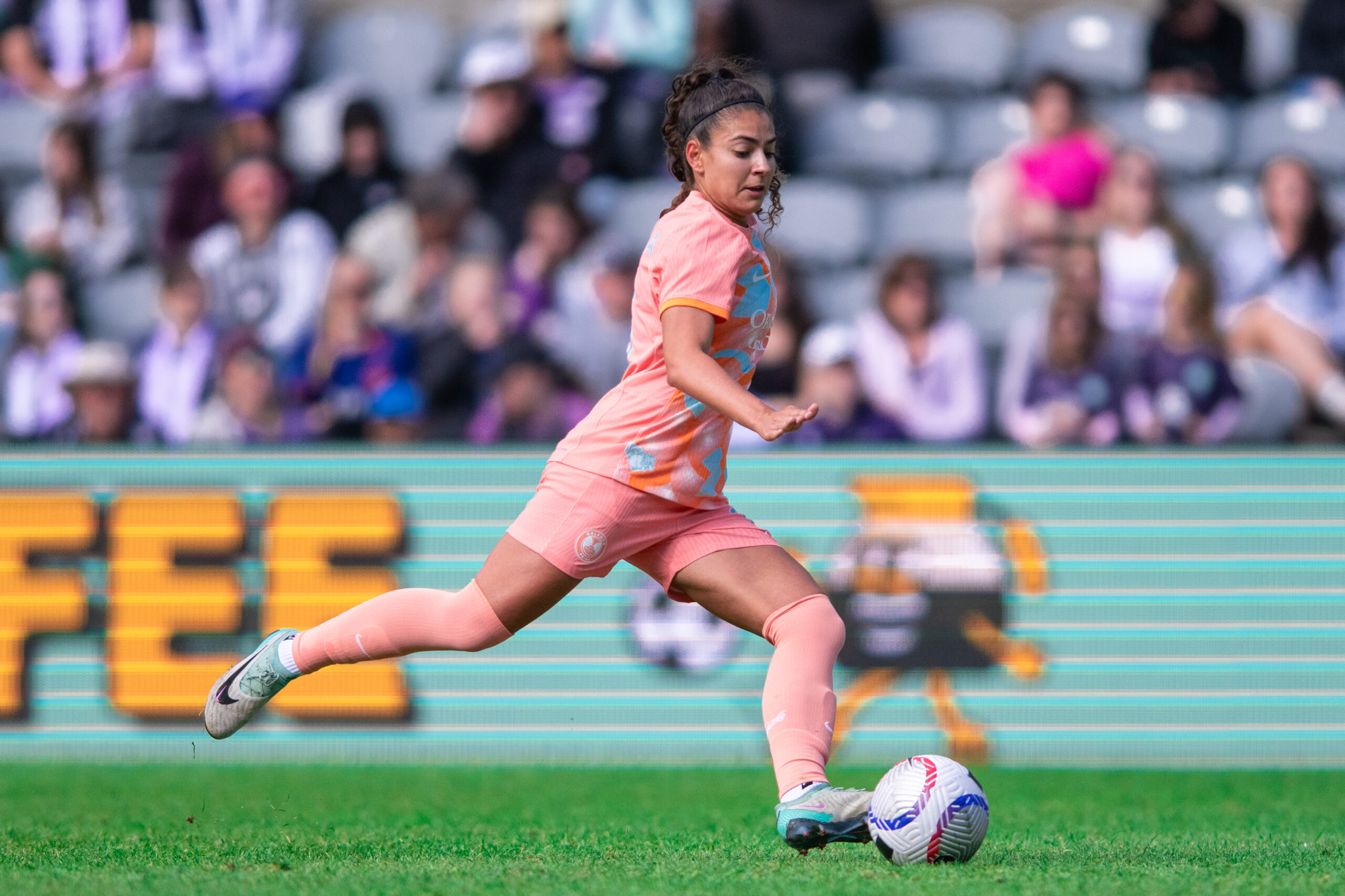
The Pride are riding a three-match winning streak heading into Friday’s match against Racing Louisville — the team’s final game before the NWSL’s summer break. Given this is the last match until August, it is important that the Pride make a statement and leave an impression on the competition. What do the Pride need to do to take all three points from Racing Louisville at Lynn Family Stadium Friday night?
More Offense
The Orlando Pride have scored six goals in the last six matches. That might not seem too bad, but three of those goals came on Barbra Banda’s hat trick against the Utah Royals. That means in the other five matches, the Pride have only scored three goals. That isn’t enough for a team that wants to repeat the double.
I don’t think the team has found a proper replacement for the departed Adriana. Seb Hines has tried using Ally Watt, Prisca Chilufya, and Julie Doyle, though none have contributed to a commensurate level. Without another threat up top, teams can focus more heavily on Banda, making it difficult for her to score. Hines needs someone to step it up a notch by being a legitimate scoring threat, thus freeing Banda to deal with only two defenders and not three or four. This is the last chance before the break to figure it out.
Stop Sears and Co.
The Pride will face a capable Racing Louisville offense. Emma Sears leads the way for Louisville with six goals this season. The opposition also has Savannah DeMelo, Taylor Flint (née Kornieck), and Kayla Fischer. Louisville has 17 goals this season compared to the 20 scored by Orlando. I’m saying that Louisville is a legitimate threat.
I feel that Hines found the best back line in the last match with Oihane at right back, Emily Sams and Kylie Nadaner at center back, and Cori Dyke on the left. This is the back four that I think will provide the best defense in front of Anna Moorhouse. That is the back line that will need to deal with Sears and the others. A clean sheet may be a lot to ask on the road, but this defense could make it happen.
Back to Basics
The last few matches the Pride have taken short corners at almost every opportunity presented. Please stop doing that. No more Pepper Shakers or Loki’s Toboggan — see Ted Lasso season 1, episode 10. Put the ball in the box and let things happen. Between Marta, Angelina, Carson Pickett, and Summer Yates, the Pride have enough players who can put in a good ball from a corner kick or free kick.
Weird and sometimes wonderful things happen when you simply put the ball in the box. A player can score a header, the ball can bounce to a player for a shot, there could be an own goal, or even a handball resulting in a penalty. Yes, the ball might go out for a goal kick or a Pride player could commit a foul, but the team’s success rate on short corners is not good and Orlando has capable scorers who can finish in close. Leave the tricksy training ground antics at home and put the ball in the darn box.
That’s what I’ll be looking for Friday night. Where do you think the game will be won or lost? Let us know in the comments section.
-
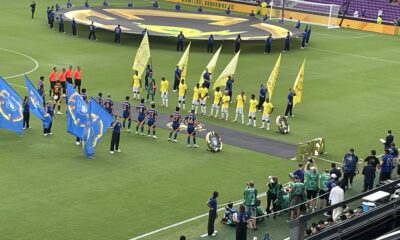
 Local Soccer Events4 days ago
Local Soccer Events4 days agoUlsan HD FC vs. Mamelodi Sundowns FC: Final Score 1-0 as South African Side Wins First FIFA Club World Cup Match in Orlando
-
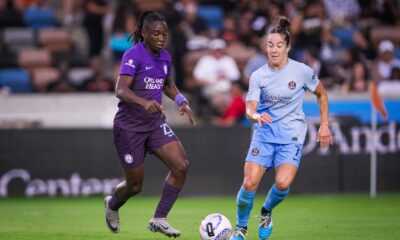
 Orlando Pride2 weeks ago
Orlando Pride2 weeks agoOrlando Pride vs. Houston Dash: Preview, How to Watch, TV Info, Live Stream, Lineups, Match Thread, and More
-

 Orlando Pride1 week ago
Orlando Pride1 week agoOrlando Pride vs. Bay FC: Preview, How to Watch, TV Info, Live Stream, Lineups, Match Thread, and More
-

 Orlando City1 week ago
Orlando City1 week agoOrlando City vs. Colorado Rapids: Final Score 1-0 as Ojeda’s Goal Snatches Road Win for Lions
-
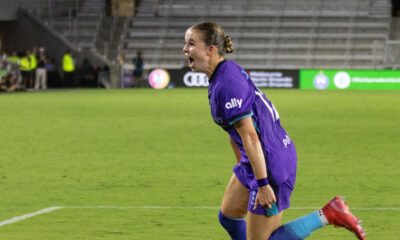
 Orlando Pride2 weeks ago
Orlando Pride2 weeks agoOrlando Pride vs. Houston Dash: Final Score 1-0 as Cori Dyke’s Goal at the Death Lifts Pride
-
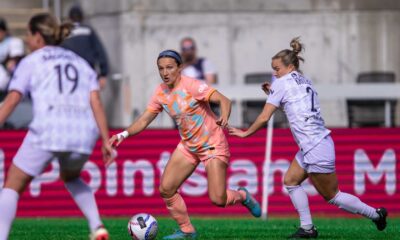
 Orlando Pride2 days ago
Orlando Pride2 days agoOrlando Pride vs. Racing Louisville FC: Preview, How to Watch, TV Info, Live Stream, Lineups, Match Thread, and More
-

 Orlando City1 week ago
Orlando City1 week agoOrlando City vs. Colorado Rapids: Preview, How to Watch, TV Info, Live Stream, Lineups, Match Thread, and More
-
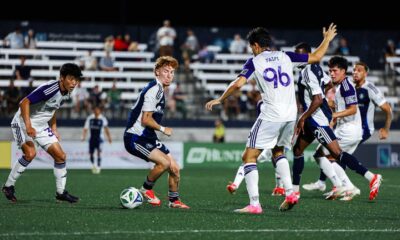
 Podcasts2 weeks ago
Podcasts2 weeks agoPawedCast Episode 484: OCB Beats Huntsville, Alex Freeman’s USMNT Debut, Colorado Preview, and More


